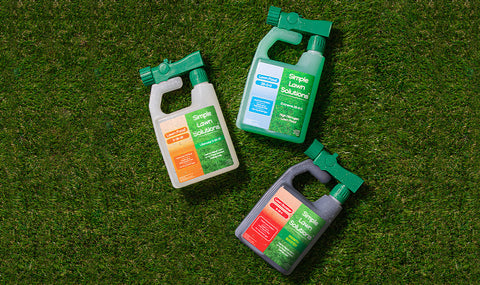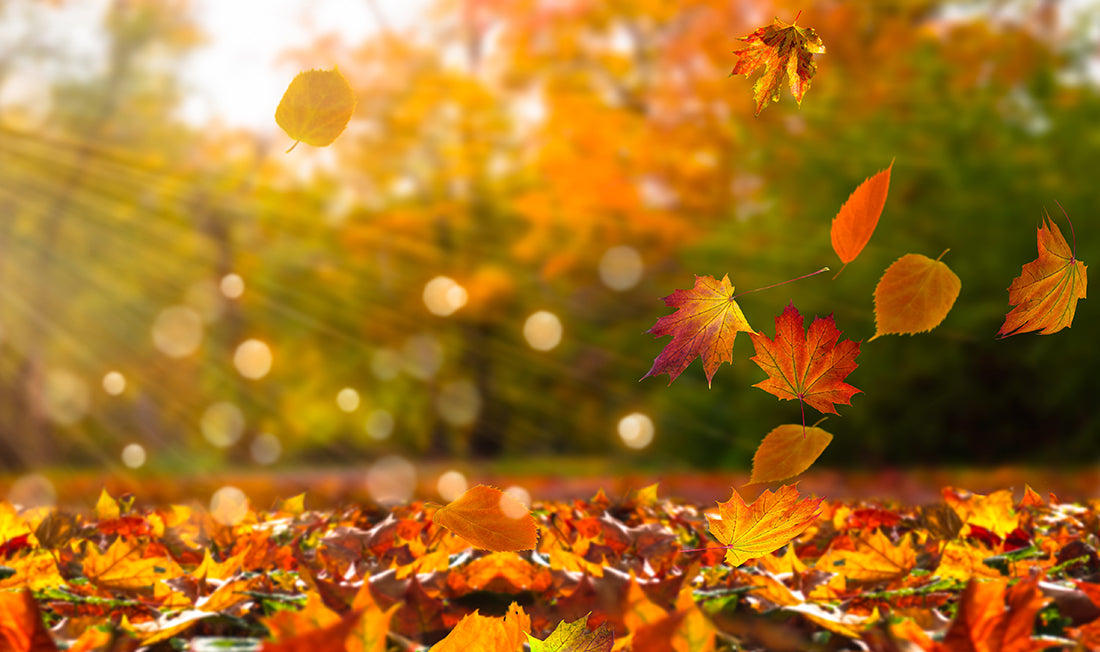The fall is a great time for seeding projects. For much of the northern half of the U.S., fall is the best time for establishing lawns by seed or filling in bare spots and over-seeding areas that have thinned due to summer stress. Throughout the south and much of the transition zone, the fall means it’s time to overseed your dormant warm-season lawn for a splash of color in your otherwise brown, winter landscape. Whatever your reason, in this post, we will touch on everything you need to consider if you’re planning on slinging some seed this fall. If you’re looking for step-by-step directions for seed or new lawn establishment, consider referencing our seeding guide.

Over-seeding thinning cool-season lawns
Choosing to repair your summer-thinned lawn by seeding in the fall can be more advantageous than seeding in the spring for a couple of reasons. First, it allows you to apply pre-emergence herbicides in the spring. Remember that the pre-emergence herbicide you apply in the spring to prohibit the growth of various summer annual weeds will also prohibit the growth of your spring-seeded grass seed. Seeding in the fall gives you full use of your spring pre-emergence arsenal.
It’s important to choose the same grass seed or a similar blend or mixture as what you already have growing in your yard. Choosing different grass species or even just different cultivars of the same species can result in a lack of uniformity that may be unacceptable to some. If you’re just looking to throw some seed down and get some green cover, this might not be a huge deal to you. If you’re concerned with having a uniform lawn, and you don’t know what cultivar of grass is currently inhabiting it, then it could be a good idea to seed your entire lawn rather than just thin spots. You could end up with odd-looking patches of different grasses if the morphology of your new grass is different enough.
Another reason the fall works so well is that you give your seed as much time as possible to establish and grow into a healthy resilient plant before the stresses of summer return. When seeding in the spring, your lawn can be thrown into the fire of summer before it’s mature enough to handle the heat and drought. Spring seedlings haven’t had the same opportunity (length of time) to establish a dense root system as their fall seeded counterparts prior to drought and heat returning.

Fall Weed Control
Remember that if you’re planning on doing any fall weed control, many herbicides have lengthy intervals after applying in which seeding is not recommended. So if you’re planning on doing weed control in the fall (great time to kill dandelions), check the label on your herbicide to see how long you need to wait before you can seed. For cool-season lawns (some warm-season lawns but NOT Bermuda or zoysia), a popular herbicide active ingredient is “Mesotrione”. This herbicide has pre- and post emergence activity on a number of weeds and is safe to use at seeding.
If your lawn has incurred enough damage from the summer that the canopy is sufficiently thinned to ensure seed-to-soil contact and that adequate sunlight reaches your seed, then you might be able to get away with skipping this step. Prior to seeding, it’s important to lower the height of cut on your lawn to just above scalping. If you’re comfortable scalping your lawn, that’s an option too. The goal here is for the seeds to encounter as little resistance as possible before reaching the soil. Seed-to-soil contact is important for proper germination. Additionally, the added sunlight cast on your seed from cutting your turf canopy lower than normal will help with germination.

When should Fall seeding occur?
Another good thing to do is to make sure you have at least a month of growing time prior to your first hard frost date. The more time, the better. We want the grass to mature as much as possible prior to the first hard frost. Taking this and the previously mentioned items into consideration if you’re planning some fall seeding of your cool-season lawn, will help make sure everything goes to plan.
Over-seeding dormant warm-season lawns
Over-seeding your warm-season lawn with cool-season grass is a great way to add some attractive green color to your landscape during the winter months. The goal here is to use a quick-germinating grass that will not be competing with your warm-season lawn once next summer arrives. Some commonly utilized grasses for overseeding are perennial ryegrass (Lolium perenne), rough bluegrass (Poa trivialis), or annual ryegrass (Lolium multiflorum). Of these, perennial ryegrass is far superior to the other two. It germinates very quickly, and if done correctly, you can be mowing a perennial rye-overseeded lawn in 21 days. Perennial ryegrass has a great dark-green color and will likely not persist into the heat and drought of the following summer.
Like any over-seeding, it’s best to scalp your existing lawn down or at least cut it very low. Removing the clippings here is necessary, normally we would advise mulching, but you want your seedbed as clear as possible. You can also use some sort of drag (a rake or a metal floor mat?) after seeding to make sure that your seed makes it down below the lawn canopy. If this doesn’t happen, your freshly germinated seeds will not have any medium in which to root and you’ll have wasted your time overseeding.
If you were planning on doing any winter-annual weed preemergence control, it’s best to skip that so your grass seeds have the chance to germinate. Your thick overseeded lawn will hopefully be able to choke out any winter weeds looking to make a home in your yard. At the very least, you’ll be able to spot-treat them later in the winter when your grass is more mature.
Overseeding warm-season lawns requires plenty of seed. Be prepared to purchase as much as 10-20 pounds of seed per 1000 square feet of lawn, choosing the highest rate for the most heavily trafficked areas. Don’t skimp here with the seed, you get what you pay for and if you do overseed, you don’t want it to look like it was a half-price job.
Seeding Rates Per Grass Type
Below are some general seeding rates for cool-season grasses. We will omit warm-season rates because seeding warm-season grasses in the fall is not advised.

When you’re looking at a seed label, choose a grass with a certified “blue label”, this seed is of the highest quality. Also, try to purchase something with as little weed seed and as high of a germination percentage as possible.
The Best Fertilizer for Seeding

With any seeding, it’s a good idea to put down some starter fertilizer, either immediately before or after you seed. Simple Lawn Solutions 6-18-0 and 3-18-18 have the phosphorus content necessary to ensure your seeds get off to a great start. Phosphorus is relatively immobile in the soil, so that means your grass is reliant on an extensive root system to intercept the phosphorus that it needs. Young seedlings just don’t have that ability, so providing them phosphorus right from the get-go is a great idea. A few weeks after germination, it’s a good idea to get something with higher nitrogen put down, like SLS 28-0-0. Heeding this advice will set you up for a successful fall seeding. Contact us today for a customized lawn care plan, and enjoy the cooler weather.










1 comment
I have Saint Augustine grass what kind of seeds do you have or fertilize to use to keep green and from turning brown